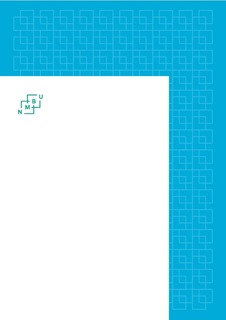| dc.description.abstract | Bakgrunn: Et av fem bærende prinsipper for folkehelsearbeidet i Norge er medvirkning. Demokratiseringen av norsk planlegging har bidratt til at medvirkningsprinsippet også er tydelig gjennom planlovgivningen, der kommunene fremstår som en viktig arena for folkehelsearbeidet. Det pågående arbeidet med å utrede en mulig lovfesting av Ungdomsrådet som medvirkningsarena for barn og unge i kommunen, gjør erfaringene fra dette arbeidet til et aktuelt og viktig forskningsområde.
Formål: Målet med denne studien har vært todelt; å undersøke hvordan barn og unges deltakelse i den kommunale planprosessen er tilrettelagt for medvirkning i to norske kommuner og å få en dypere forståelse av hva ungdommene erfarer gjennom å delta i kommunale planprosesser.
Metode: Studien har hatt en kvalitativ forskningsdesign, med bruk av strukturerte gruppesamtaler som metode. To casekommuner har vært gjenstand for gruppesamtaler, som ble utført ved bruk av intervjuguide og moderator. Gruppesamtalene ble transkribert til skriftlig form, og videre analysert ved hjelp av Malteruds Systematiske tekstkondensering, modifisert etter Giorgis fenomenologiske metode. Funn fra analysen er til slutt drøftet i forhold til relevant teoribakgrunn og tidligere empirisk forskningsmateriale som omhandler barn og unges medvirkning i planprosesser.
Resultater: Faktorer som rekruttering og representativitet, tid og tilgang i prosessen, voksne ressurspersoner, økonomi og opplæring var vesentlige faktorer ved organiseringen og tilretteleggingen av Ungdomsrådenes arbeid, som bidro til å skape reell medvirkning for ungdommene i dette arbeidet. Resultatene viste også at barn og unges erfaringer og opplevelser i forhold til opplæring og kompetansebehov, overføringsverdi ved bevisstgjøring og samfunnsengasjement, og hvordan de opplever konkret medvirkning, har sammenheng med hvilken empowerment disse prosessene kan gi, både for unge som individer og som gruppe.
Konklusjon: Studien bekrefter tidligere forskning på dette området. Samtidig gir resultatene indikasjoner om hvordan maktfordelingen i planarbeidet påvirker rammene for medvirkningsarbeidet, og i siste instans kan være avgjørende for at barn og unges medvirkning i kommuneplanleggingen i praksis blir reell. Når de unges opplevelser av medvirkning og empowerment igjen avhenger av dette, kan det tyde på at føringene som legges for Ungdomsrådets arbeid i etterkant av en eventuell lovfesting, er vesentlige for hvilken verdi dette arbeidet vil ha.
SUMMARY
Background: Public Health in Norway is based on five principles, out of which citizen participation is one of them. Democratization of Norwegian planning has contributed to a comprehensive view on this principle in legislation and laws on this matter. Community-based Public Health is seen here as an important area. The ongoing work regarding Youth Councils as legislated participation forums for children in municipalities, makes the findings of this research an area of importance and actuality.
Purpose: The purpose of this study has been twofold; to examine how children’s participation in planning processes through Youth Councils is facilitated, and to gain a deeper comprehension of the experiences children are having by participating in planning processes.
Method: A qualitative research design, with structured group interviews was used. Children and adolescents from two case municipalities were interviewed by the use of an interview guide and a moderator. The interviews were transcribed into written form, and analysed using Systematic Text Condensation by Malterud, modified by Giorgis Fhenomenological Analysis. Findings from the analysis were afterwards discussed according to relevant theoretical framework and empiri regarding children’s participation in public planning.
Results: Factors as recruitment and representativity, timing and access in the planning processes, dedicated human and economic resources, and professional training was relevant to the organization and facilitation of the work in Youth councils, to provide real participation to the participating children. Findings also show that the experiences children and adolescents have regarding professional training and need of competence, follow-up values of community commitment, and how they experience the results of their participation, is connected to how empowerment is possible through these processes, for children as individuals and as a group.
Conclusion: The study confirms earlier findings of research in this area. At the same time, results indicate how power divided within the planning, affects the framework of the participation process, and therefore could be crucial to whether children’s participation in municipal planning is conserved to be real. Knowing that their experiences of participation and empowerment relies on this, it indicates that the framework shaping the future practice of the Youth Councils’ work will be of great importance to the value of this work. | nb_NO |
